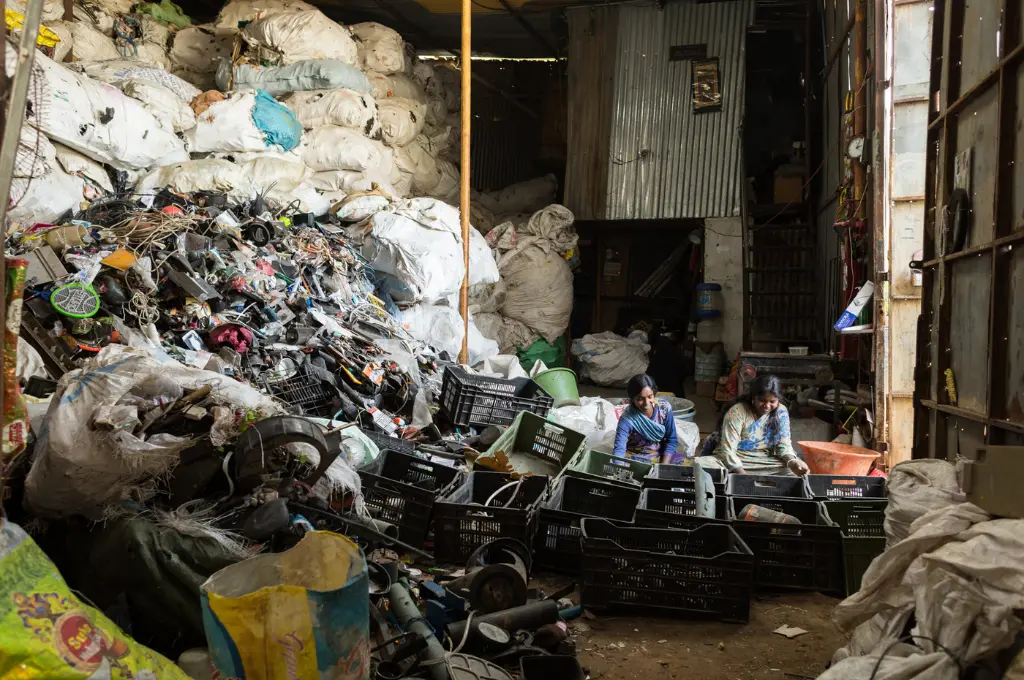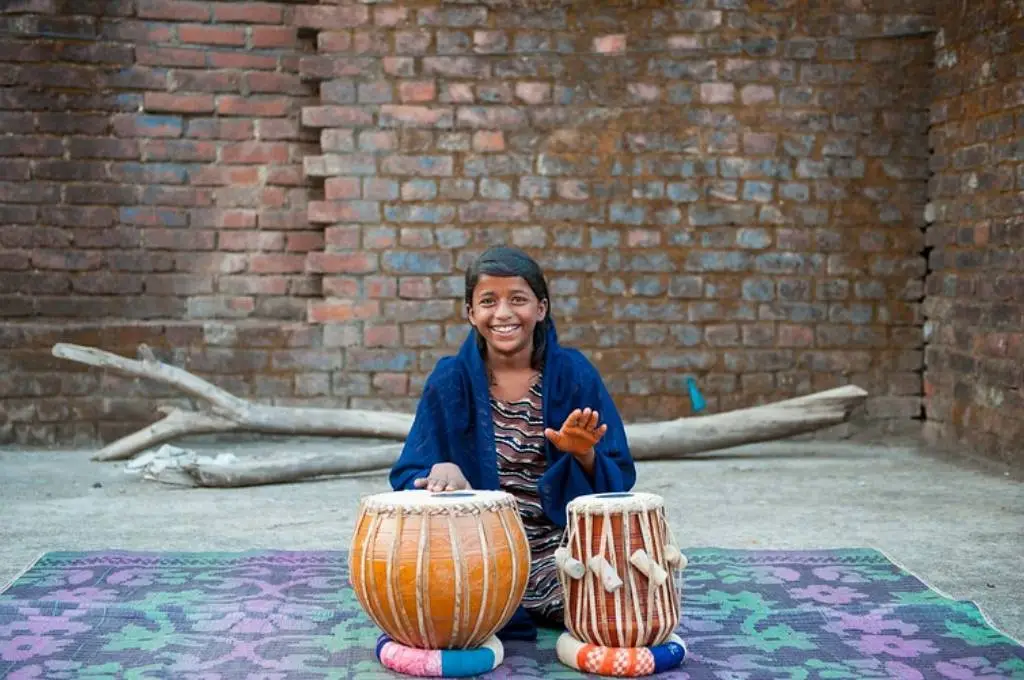Over the past decade, access to electricity has increased significantly among rural households in India. However, the quality of this electricity supply is still questionable—even where there is access, it is irregular. This unreliability particularly hurts economic activities. More than 4 million rural microenterprises, usually businesses related to food, post-harvest processing, and garment manufacturing, highlight inconsistent electricity as a major bottleneck to the growth of their businesses. According to the World Bank Enterprise Survey, more than 55 percent of Indian manufacturing and service sector firms are affected by electricity supply interruptions an average of 14 times a month.
As a part of its net-zero goals, India aims to have 50 percent of its cumulative electric power capacity from non-fossil fuel-based energy sources by 2030. This has the potential to transform how microenterprises access electricity supply.
A significant focus of this strategy lies on distributed renewable energy (DRE) projects. DRE refers to the generation of electricity from renewable sources (such as solar, wind, biomass, or small hydro), which are at or near the point of use, rather than at large centralised power plants. Unlike traditional energy systems that rely on a few large power plants to generate electricity for a wide area, DRE systems are localised and often modular. This allows for energy production at a local level, meeting the needs of specific communities, businesses, or even individual households, especially in remote or underserved regions of the country.
In the context of livelihoods, this means that appliances such as irrigation pumps, refrigerators, and food processors, which often run on erratic electricity supply, can then be powered using DRE sources. Additionally, they can be manufactured and retrofitted with energy-efficient motors that consume less energy. For small businesses and microenterprises, this could mean using a biomass-powered cold storage, solar dryers, food processing machines, solar pumps, and solar refrigerators.
Take the example of Lalita Devi, a member of Khet Kisan Producer Company, an eight-year-old farmer producer organisation (FPO) in Saraipur village, Uttar Pradesh. Lalita and her fellow farmers grow bananas. Earlier, they relied on two deep freezers and a refrigeration unit that ran on electricity. However, due to the inconsistent power supply and lack of storage space, a lot of their produce was going to waste, causing them monetary losses. They’ve now shifted to refrigeration technology powered by biomass or farm waste. Since the shelf life of the produce increases due to refrigeration, there is no longer an urgency to sell it immediately, allowing them to reduce income losses as well as on-farm waste. Today, the FPO has been able to cut down on losses and now the annual turnover is INR 1 crore.

The livelihood opportunity of DRE
Recognising the potential of DREs in supporting the growth of microenterprises in rural areas and creating dignified economic opportunities for marginalised communities, the government has taken several steps for promoting DRE technology. In February 2021, for instance, the Ministry of New and Renewable Energy (MNRE) released a DRE policy framework. This framework calls for the convergence of DRE technologies with livelihoods programmes of other ministries such as the Ministry of Rural Development, Ministry of Agriculture and Welfare, and Ministry of Tribal Affairs. In addition to the framework, there’s scope for other collaborations between different national and local programmes focused on livelihoods, such as PM Formalisation of Food Processing Micro Enterprises (PMFME), National Agriculture Infra Financing Facility, and Mudra Yojana.
Financing becomes critical to enable the adoption of DREs.
Take the example of Ramesh Khangoudar, a farmer from Belgavi, Karnataka. Due to frequent power cuts in his village throughout the year, he was on the lookout for a more reliable methods to process his crops post-harvest, and sell them. After working with solar-powered technology in his farm, he wished to adopt more DRE machinery for post-harvest processing. To achieve this, he utilised the financial assistance available under PMFME for food processing entrepreneurs and acquired a solar-powered oil extraction unit, flour mill, and turmeric pounder. He now sells his farm-processed goods through a petty shop under his brand name, and has established a small agro-processing business.
International philanthropies such as Good Energies, IKEA Foundation, and DOEN too are advocating for universal energy access. IKEA Foundation, for instance, has partnered with GIZ to help smallholder farmers and food producers access DREs.
However, there are still several gaps that are hindering the wide-scale adoption of DRE technology.
1. High costs of technology: DRE-powered solutions are capital-intensive, even though they can be more economical than grid or diesel variants over their lifetime. Often, micro-entrepreneurs looking to adopt this technology do not have enough disposable income to be able to afford it. Thus, financing becomes critical to enable the adoption of DREs. For example, the smallest capacity variant of a solar-powered refrigerator costs approximately INR 80,000. Paying such an amount in one go becomes challenging for a small kiraana shop owner or a marginal fisherperson with an average monthly income of approximately INR 9,000. Furthermore, accessing credit for such nascent technologies is difficult as most financial institutions do not have DRE livelihoods technologies in their portfolio.
2. Hesitation among buyers: The ‘touch and feel’ experience of the technology is important to instill confidence in the people buying it. For instance, a dairy farmer in Rajasthan needs to see how a solar refrigerator works before they adopt it. Therefore, it is important for the manufacturers of these technologies to make them available locally.
3. Limited training: DRE livelihood technologies are a nascent product and have not yet been mainstreamed for livelihoods. Therefore, there are limited skill training modules available. Imparting training on the operations, upkeep, and business value of these technologies is imperative. However, the manufacturers of these technologies are constrained by resources and capital in being able to have a cross-country presence and therefore it becomes challenging for them to provide training support. Not having enough skill training or capacity-building support means that the usage of technologies is delayed or does not happen at all.
4. Lack of after-sales services support and market linkages: Market linkages and after-sales services support are critical to encourage long-term use of such technologies. Market linkages, both backward (raw material) and forward (to sell the final product), are an important piece of the puzzle for sustained usage of the technologies. For example, to use silk reeling machines, cocoons need to be available along with a market to sell the silk yarn. In addition to market linkages, after-sales services such as repair and customer care support need to be present locally. This will ensure timely servicing of the technologies in case of damage, maintenance, and addressing of any usage-related query by the customer.
Grassroots nonprofits can play a critical role in the adoption of DRE technology
DRE for livelihoods requires mainstreaming. Although there’s some convergence at the national and sub-national levels, ensuring DRE technology adoption by micro-entrepreneurs demands collaboration throughout the ecosystem. Bridging existing livelihood efforts with DRE technology at the grassroots level is essential. This is where grassroots nonprofits can play a critical role.
1. Build awareness through existing networks: Grassroots organisations that have been working with community members in a particular region have an existing network to tap into and infrastructure that can be utilised. Regional centres of these organisations, for example, can serve as demo centres to help smallholder farmers better understand the technology. They can also help demonstrate the positive impact of DRE technologies. This can be done in collaboration with social start-ups through on-ground campaigns that focus on knowledge dissemination and community awareness. Additionally, these organisations can facilitate feedback from farmers about the technology and their needs, creating a critical link between manufacturers and users.
2. Explore financing pathways for purchase of technology: Organisations can help inform and sensitise their partner financiers, such as microfinance institutions (MFIs) and rural banks, and build their confidence in DRE technologies. They can create awareness in their existing network of financiers that fund other livelihood activities, and enable integration of DRE livelihoods technologies in their portfolio by sharing ground stories and impact evidence. Further, their network of FPOs and self-help groups can be leveraged for group-based lending. This can be done in cases of large technologies such as biomass cold storage or solar dryers. Given the joint liability, this will improve lending feasibility for the financiers.
3. Leverage market linkages: To ensure the sale of products emerging from DRE-based production, market linkages that already exist for businesses in the region can be tapped into. For example, a nonprofit working with women micro-entrepreneurs will have established market linkages to sell the final products. These linkages can be leveraged for products emerging from DRE-based production as well. To this end, start-ups such as KrishiHub and Hesa can be effective partners since they possess useful market networks, particularly for value-added products such as jams, dried mangoes, and pickles.
4. Facilitate skill training programmes: Livelihood organisations can train a fleet of service providers at the local level for installation, repair, and maintenance of the technologies. This can also contribute to job creation. Organisations working at the grassroots can host programmes to provide information on what these technologies are, how they work, and how they can be used for livelihoods. Trained technicians can then provide last-mile coverage.
To scale the adoption of DRE technologies, it’s crucial to integrate them into existing livelihood initiatives. Policymakers and social enterprises should collaborate with grassroots nonprofits already deeply embedded in addressing various livelihood aspects. While these grassroots organisations possess valuable resources, last-mile reach, and community rapport to advance DRE technologies, additional support from stakeholders and philanthropists is necessary. This collective effort can create sustainable livelihood opportunities, bringing green alternatives closer to communities and contributing to India’s transition to net zero.
This article was updated on February 7, 2024, to reflect that India’s net-zero goals include meeting 50 percent of its electric power capacity from non-fossil-fuel-based energy sources by 2030.
—
Know more
- Read this article to learn about solar pumps in irrigation.
- Read this article to learn more about how DRE technologies can aid India’s development.
- Read this article to learn how solar power impacts women.
Do more
- To learn more about sustainable livelihoods powered by DRE, reach out to the authors at divya.gaur@ceew.in and angarika.gogoi@ceew.in







